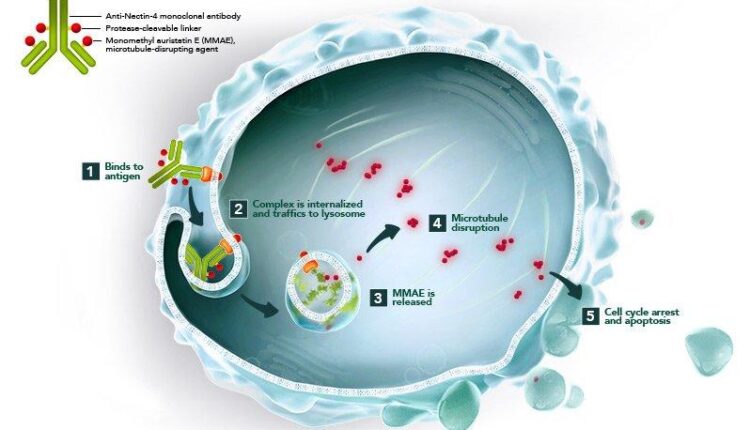Mesane kanserinde yeni tedavi seçeneği olarak enfortumab vedotin ve pembrolizumab kombinasyonu
Mesane kanserinde yeni tedavi seçeneği olarak enfortumab vedotin ve pembrolizumab kombinasyonu
Avrupa onkoloji derneğinin Ekim 2023’te Madrid’de yaptığı onkoloji kongresinde, en çok ses getiren ve şüphesiz en heyecanlı gelişme mesane kanseri ilgili yapılan sonuçlarının açıklanmasıydı
Mesane kanserinde artık yeni ve çok güçlü bir tedavi seçeneği var. Bu seçenek 30 yıllık tedavi seçeneğine olan kemoterapiye göre çok daha etkili ve tartışmasız standart tedavi olduğu saptandı.
Enfortumab adlı molekül immünoterapi(pemrolizumab) ile hastalara verildiğinde kemoterapi göre yaşam süresini iki kat daha fazla artırdığı ve yanıt alınan hastaların daha uzun yaşadığı görülüyor. Enfortumab, mesane kanser hücrelerinde bol bulunan Nectin-4 proteinine bağlanan antikor kısmı ve kemoterapi kompleksinden oluşuyor.
Bu kompleks kanser hücrelerine bağlanıyor ve kemoterapinin hücre içinde salınmasına neden oluyor. Böylelikle kanser hücreleri normal hücrelere göre daha çok kemoterapi etkisinde kalıyor ve yok olması sağlanıyor. Enfortumab vedotin ve pembrolizumab kombinasyonu böbrek fonksiyonu bozuk olan, karaciğer ve kemik metastazı olan kötü seyreden hastalarda aynı zamanda kemoterapiye göre etkili olduğu saptandı.Bu seçenek evre IV mesane kanseri için büyük umut.
Bu veriler ışığında, Amerika Birleşik Devletleri Gıda ve İlaç Dairesi (FDA), Enfortumab vedotin ve pembrolizumab kombinasyonunu evre IV mesane kanserinde ilk basamakta, ilk seçenek olarak onayladı ve Amerika Onkoloji Derneği Kılavuzu kombinasyonu seçilmesi gereken ilk tercih olarak önerdi. Avrupa İlaç Dairesi (EMA) bilimsel komitesi Enfortumab vedotin ve pembrolizumab kombinasyonunu evre IV mesane kanserinde ilk basamak seçenek olarak onaylanmasını tavsiye etti.
kaynak
ESMO2023, ASCO 2024
Clinical trial identification
NCT04223856.

